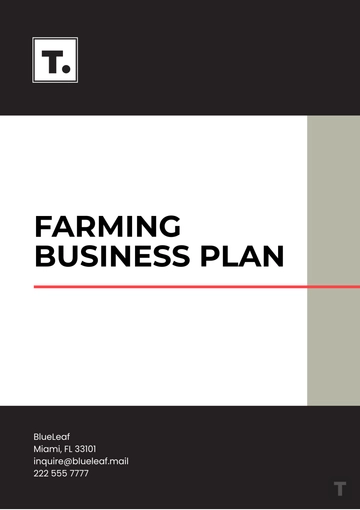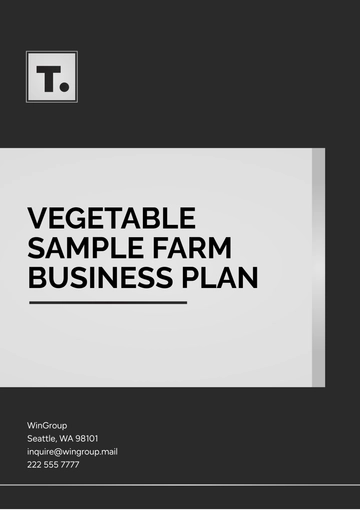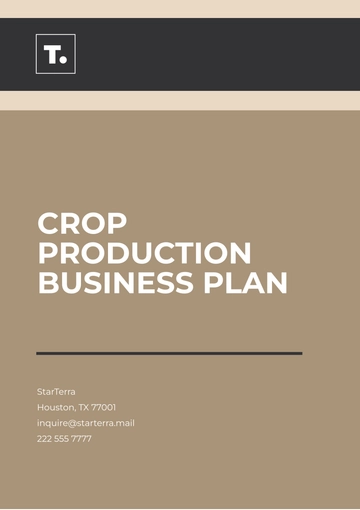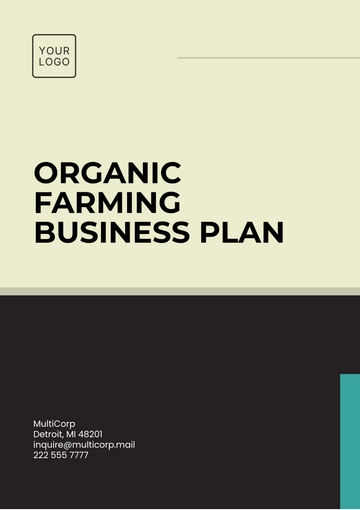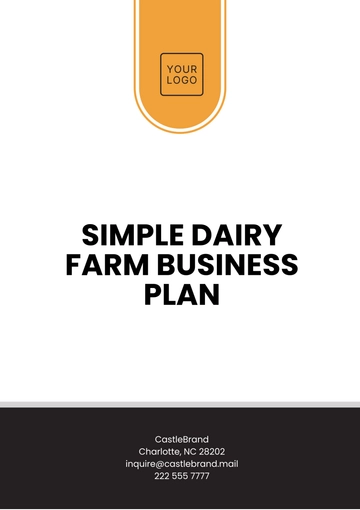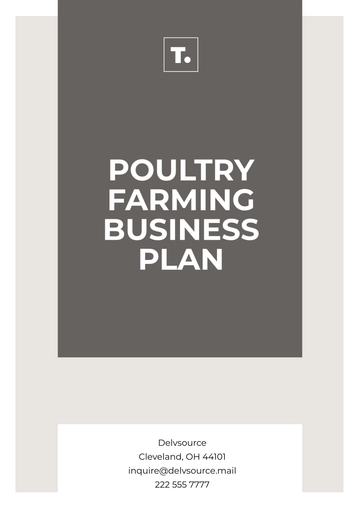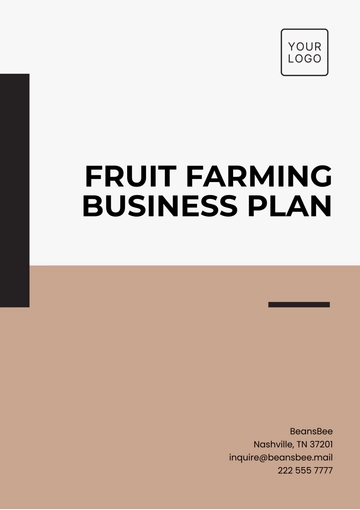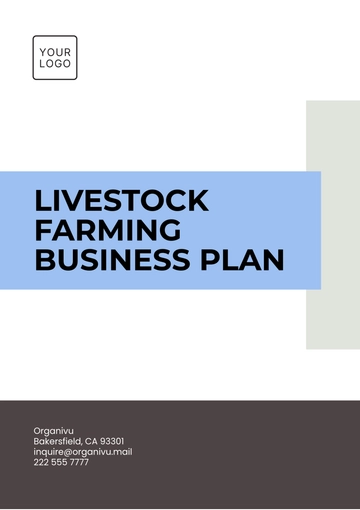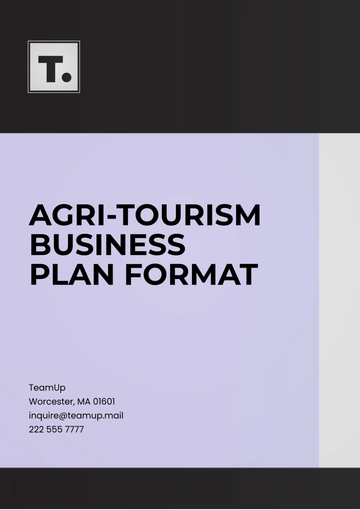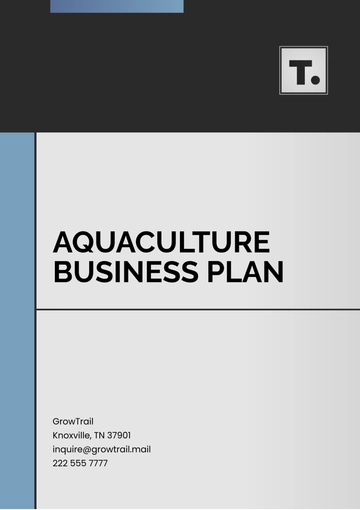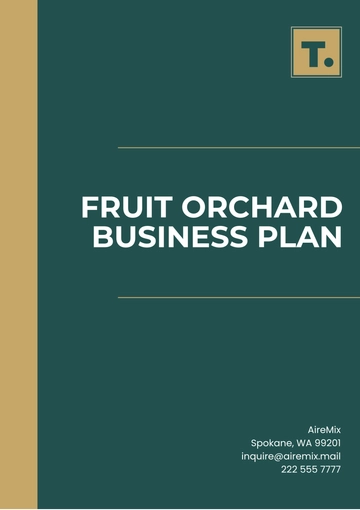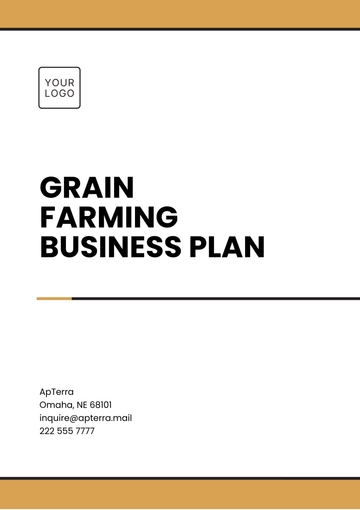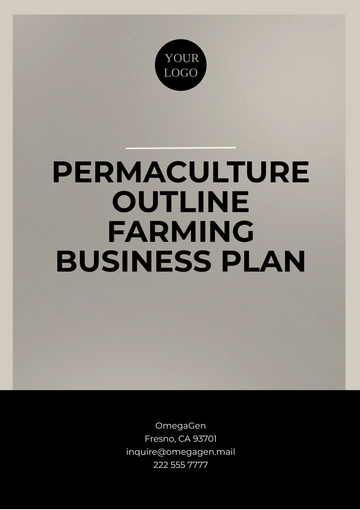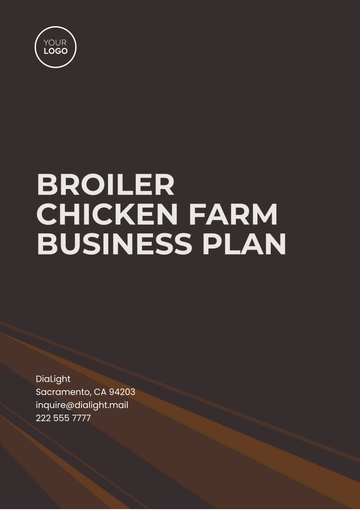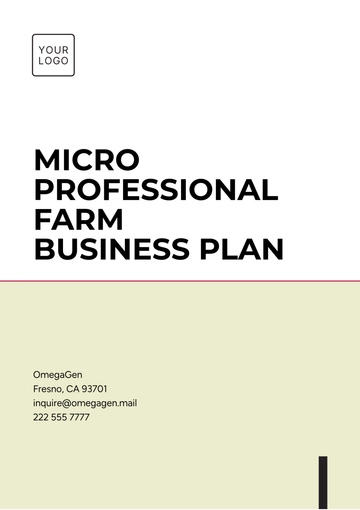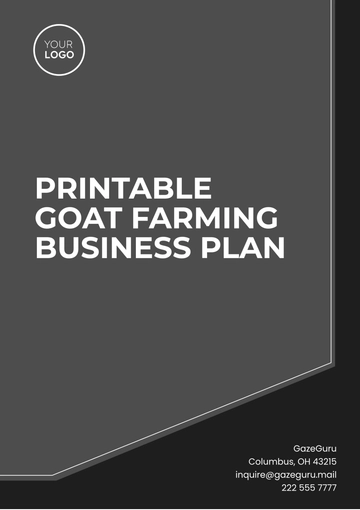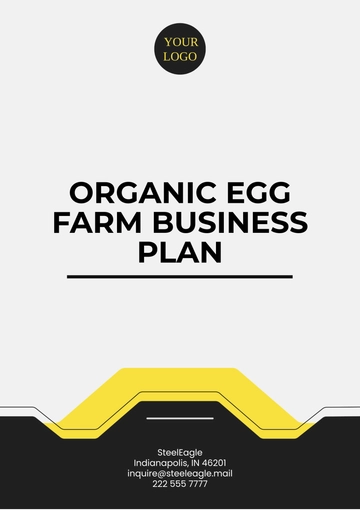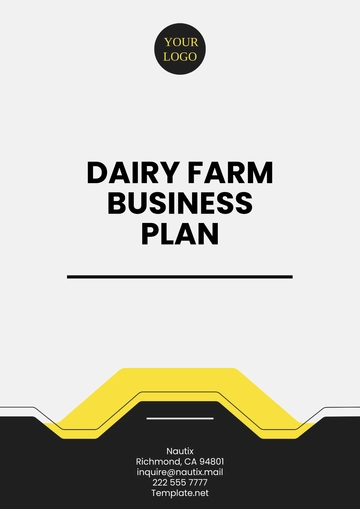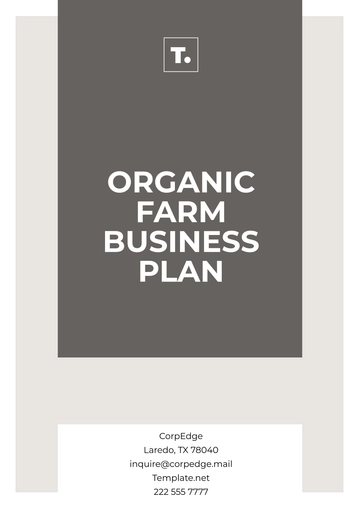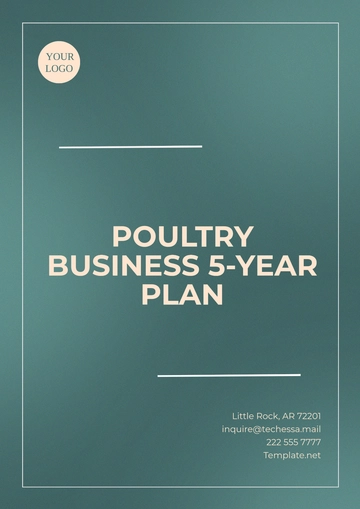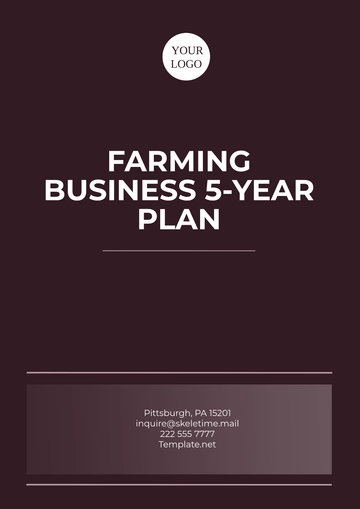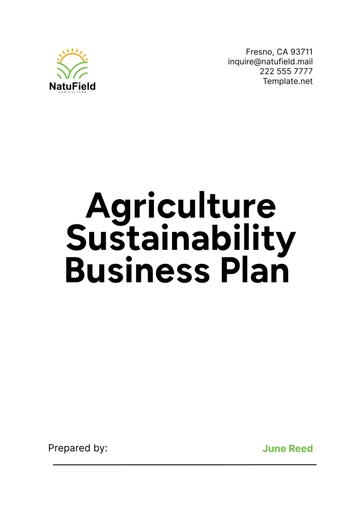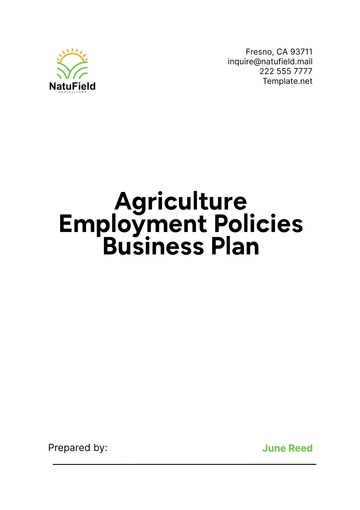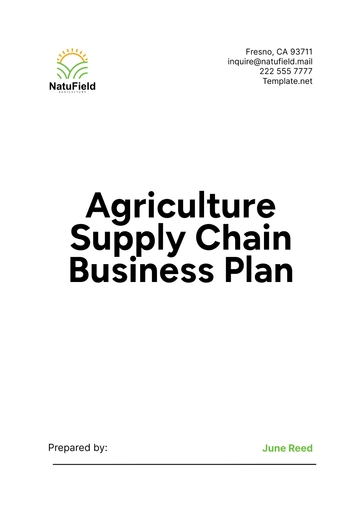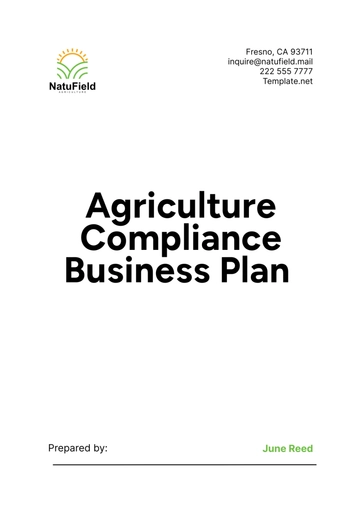Free Farming Business Plan
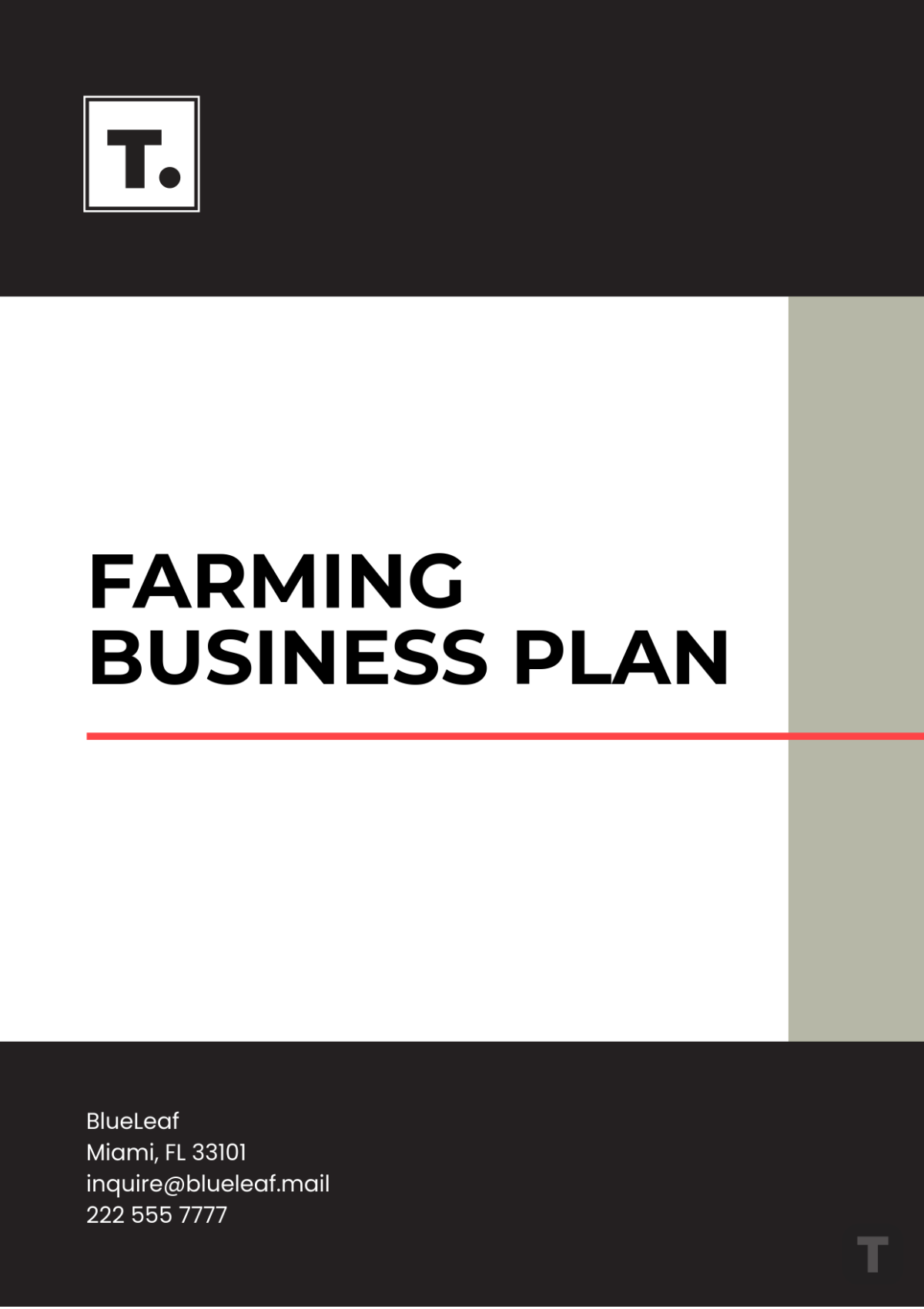
Prepared By: [YOUR NAME]
Date: [DATE]
Company: [YOUR COMPANY NAME]
Location: [LOCATION]
I. Executive Summary
A. Mission Statement
[Your Company Name] aims to produce high-quality, sustainable, and affordable crops to meet local and regional demands while promoting eco-friendly practices that enhance the soil, preserve water, and support local communities.
B. Business Goals
To become a leading supplier of organic vegetables and fruits in [region] and nearby states region.
To establish a robust, self-sustaining ecosystem on the farm that minimizes chemical inputs.
To achieve a 25% profit increase annually over the next five years.
C. Products and Services
[Your Company Name] will primarily grow and sell:
Seasonal fruits: apples, strawberries, and watermelons
Vegetables: tomatoes, lettuce, carrots, and potatoes
Herbs: basil, parsley, and cilantro
Value-added products: jams, salsas, dried herbs
D. Financial Summary
An initial investment of $100,000 is required to cover equipment, land preparation, and initial labor costs. Projected gross revenue for Year 1 is $75,000, with profits expected to grow as yield and efficiency improve.
II. Company Description
[Your Company Name] will focus on organic, sustainable farming practices, leveraging natural pest control, crop rotation, and soil conservation methods to grow healthy, safe produce. We will operate primarily as a crop farm, with plans to expand into agritourism and direct-to-consumer delivery.
III. Market Research
A. Industry Overview
The demand for organic produce has been growing steadily due to increased health awareness and concerns over conventional farming chemicals. Consumers are increasingly interested in knowing the origin of their food and supporting sustainable agriculture.
B. Target Market
Local consumers and families interested in organic produce.
Regional restaurants that prioritize farm-to-table ingredients.
Supermarkets and local grocers that stock organic products.
Farmer's markets and direct-to-consumer channels.
C. Competitive Analysis
Local competitors include other organic farms and larger agricultural corporations. [Your Company Name] will differentiate itself by:
Offering unique, seasonal produce varieties.
Prioritizing organic certification and eco-friendly practices.
Building strong customer relationships through community engagement.
D. Market Trends
Increased preference for organic and non-GMO products.
The growing popularity of CSA (Community Supported Agriculture) subscriptions.
Rising consumer interest in sustainability and traceable food sources.
IV. Organization and Management
A. Ownership Structure
[Your Company Name] will be registered as a Limited Liability Company (LLC).
B. Management Team
Owner/Manager: Jamie Reynolds, responsible for overseeing farm operations, financials, and marketing.
Farm Operations Lead: Sarah Peterson, in charge of daily farming activities and labor supervision.
Marketing and Sales Coordinator: Ryan Foster, manages sales, customer relationships, and partnerships with local businesses.
V. Products and Services
A. Products
Fresh Produce: Organic fruits, vegetables, and herbs grown using sustainable farming practices.
Value-Added Products: Jams, dried herbs, and salsas using farm-grown ingredients.
Subscription Boxes: Weekly or monthly boxes of fresh produce delivered to local customers.
B. Pricing Strategy
Pricing will be competitive with local organic products, balancing affordability and premium quality. Pricing for subscription boxes will offer a slight discount to encourage ongoing customer loyalty.
VI. Marketing and Sales Strategy
A. Sales Channels
Farmer's Markets: Direct sales to consumers at local farmer’s markets in [region] and nearby areas.
CSA and Subscription Boxes: Weekly produce boxes for local delivery or pickup.
Wholesale to Local Restaurants: Supplying local restaurants with fresh produce.
E-Commerce Website: Online orders for pick-up or local delivery.
B. Marketing Plan
Social Media: Engage local communities through Instagram, Facebook, and Pinterest to showcase farm operations and seasonal produce.
Community Events: Host farm tours and workshops to foster community engagement.
Partnerships: Collaborate with local schools, health clinics, and restaurants to promote farm-fresh produce.
C. Sales Goals
Year 1: $75,000 in revenue
Year 2: $120,000 in revenue
Year 3: $180,000 in revenue
VII. Operations Plan
A. Location and Facilities
The farm is located on 20 acres of fertile land in rural [Location]. Facilities will include:
Crop fields and greenhouses.
A small barn for equipment and supplies.
A processing area for cleaning, packaging, and storing produce.
B. Equipment
Initial equipment required includes:
Tractors and farming implements.
Irrigation system.
Storage containers, packaging materials, and cooling facilities.
C. Daily Operations
Daily tasks will include crop planting, maintenance, harvesting, packaging, and local delivery coordination. Seasonal labor will be hired during peak planting and harvest times to ensure efficient operations.
VIII. Financial Plan
A. Startup Costs
Expense Category | Cost |
|---|---|
Land preparation | $10,000 |
Seeds and seedlings | $5,000 |
Equipment and machinery | $50,000 |
Marketing and website | $5,000 |
Packaging materials | $2,000 |
Labor | $20,000 |
Miscellaneous | $8,000 |
Total | $100,000 |
B. Revenue Projections
Year 1: $75,000
Year 2: $120,000
Year 3: $180,000
C. Funding Requirements
To cover startup costs, we seek $100,000 in funding through a combination of personal investment and a small business loan. We expect to achieve break-even by the end of Year 2.
D. Profit and Loss Forecast
Year 1: Net profit of $10,000
Year 2: Net profit of $35,000
Year 3: Net profit of $65,000
IX. Appendix
Resumes of key team members.
Land Lease Agreement (if applicable).
Permits and Licenses are required for operation.
Photos and Site Maps of the farm layout.
- 100% Customizable, free editor
- Access 1 Million+ Templates, photo’s & graphics
- Download or share as a template
- Click and replace photos, graphics, text, backgrounds
- Resize, crop, AI write & more
- Access advanced editor
You may also like
- One Page Business Plan
- Coffee Shop Business Plan
- Restaurant Business Plan
- Food Business Plan
- Real Estate Business Plan
- Executive Summary Business Plan
- Cover Page Business Plan
- Nonprofit Business Plan
- Daycare Business Plan
- Construction Business Plan
- Startup Business Plan
- Medical Business Plan
- Bakery Business Plan
- Service Plan
- Hotel Business Plan
- Catering Business Plan
- School Business Plan
- Healthcare Business Plan
- Transportation Plan
- Sports Plan
- Car Wash Business Plan
- Salon Business Plan
- Clothing Business Plan
- Farming Business Plan
- Boutique Plan
